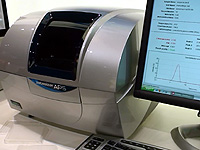

PLoS ONE 7(5):Įditor: Xiaoping Pan, East Carolina University, United States of America

This phenomenon warrants attention since it is likely that metal oxide nanoparticles will experience these natural stimuli during their transport in the environment.Ĭitation: Zhou D, Bennett SW, Keller AA (2012) Increased Mobility of Metal Oxide Nanoparticles Due to Photo and Thermal Induced Disagglomeration. Our study shows that common environmental stimuli such as light exposure or temperature variation can disagglomerate nanoparticle clusters and enhance their mobility in open waters. A fractal model summing the pair-wise DLVO interactions between primary particles within two fractal agglomerates predicts weak attractions on the order of a few kT. A cycle of temperature increase from 25☌ to 65☌ and then decrease back was found to disagglomerate the compact clusters in the heating phase and reagglomerate them as more open fractal structures during the cooling phase. Sunlight and high power sonication were able to partially disagglomerate metal oxide clusters, but primary particles bonded by solid state necks were left intact. In this study, TiO 2, ZnO, and CeO 2 were chosen as model materials for investigating the mobility of nanoparticles under three external stimuli: heat, light and sonication. One unexplored aspect of nanoparticle aggregation is how environmental stimuli such as light exposure and temperature variations affect the mobility of engineered nanoparticles. Significant advances have been made on our understanding of the fate and transport of engineered nanomaterials.


 0 kommentar(er)
0 kommentar(er)
